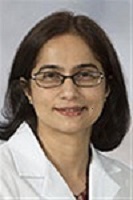
Role of Cytology and Immunochemistry in Diagnosis of Metastatic Malignancies in the Lung: A Critical Appraisal
Varsha Manucha, MD | |
 | Israh Akhtar, MD Professor University of Mississippi Medical Center Jackson, Mississippi |
Lung is one of the most common sites for primary and metastatic malignancies and a challenging site to diagnose primary versus a metastatic origin of the tumor on cytology. Pathologic diagnosis of the site of origin of cancer has major implications in the management and staging purposes and may have to be followed by testing for predictive/prognostic markers. The clinical history of a known extrapulmonary primary or the radiologic findings of multiple nodules in the lung is useful in arriving at the right diagnosis, but is not always available. Rarely pulmonary metastasis may be the first manifestation of an extrapulmonary tumor or may even present as a single nodule. The use of immunochemistry facilitates the diagnosis but could be misleading.
Target Audience
This educational activity is designed for pathologists, cytopathologists, cytotechnologists, students and other members of the cytopathology community.
Learning Objectives
- Recognize common and uncommon tumors that metastasize to lung
- Recognize the diagnostic and overlapping cytomorphologic features in determining the primary
- Recognize the pitfalls and limitations of common immunochemical stains used for making the diagnosis of primary origin of tumor in the lung
- Critically review our ability to identify the site of origin in lung tumors with emphasis on cytomorphology and cautious use of immunochemistry
Varsha Manucha, MD
Jackson, Mississippi
Jackson, Mississippi
The presenters has no conflicts of interest or financial relationships to disclose.
Continuing Medical Education (CME) Statement
The American Society of Cytopathology is accredited by the Accreditation Council for Continuing Medical Education to provide continuing medical education for physicians. The American Society of Cytopathology designates this enduring educational activity for a maximum of 2.0 AMA PRA Category 1 Credits™. Physicians should only claim credit commensurate with the extent of their participation in the activity.
American Board of Pathology Maintenance of Certification (MOC)
This product can help fulfill the CME requirements and Self-Assessment Modules (SAMs) mandated by the American Board of Pathology Maintenance of Certification (MOC) process. Earn up to 2.0 SAM Credit Hours.
Continuing Medical Laboratory Education (CMLE)
The ASC designates this activity for a maximum of 2.0 Continuing Medical Laboratory Education (CMLE) credit hours for non-physicians. The CMLE credit hours meet the continuing education requirements for the ASCP Board of Registry Certification Maintenance Program. Participants should claim only the credit commensurate with the extent of their participation in the activity.
Cytotechnologists with Licenses in Florida and California
This program is approved for 2 continuing education credits in the State of Florida and 1 in the State of California. The credit on each link is good for three years from the live presentation date.
Available Credit
- 2.00 AMA PRA Category 1 Credit™
- 1.00 California Credits
- 2.00 CMLE
- 2.00 Florida Credits
- 2.00 MOC II
- 2.00 Participant

 Facebook
Facebook X
X LinkedIn
LinkedIn Forward
Forward